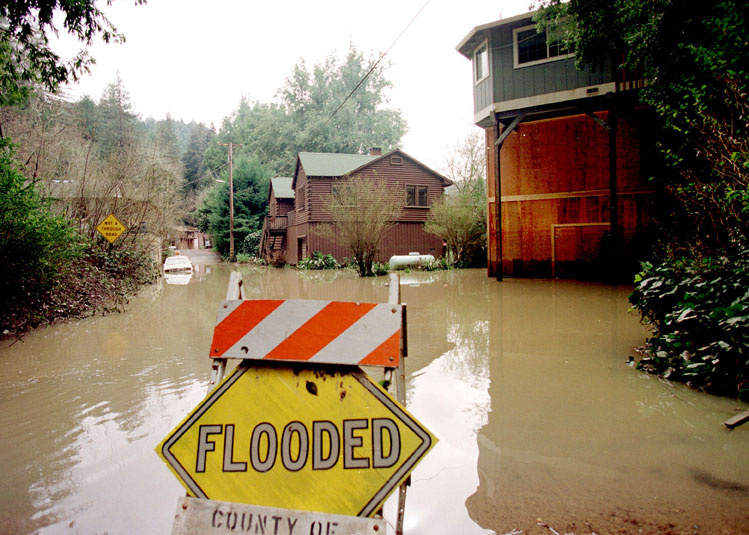With FEMA having successfully tapped the capital markets for a mid-year 2018 transfer of risk from the National Flood Insurance Program (NFIP) through its first catastrophe bond, broker Craig Poulton of Poulton Associates, has said that while it’s a positive move, more granularity will ultimately benefit the market in time.
 Speaking with A.M. BestTV just before the transaction was issued, Poulton of Poulton Associates, the administrator of the Natural Catastrophe Insurance Program, said he thinks the decision by the U.S. Federal Emergency Management Agency (FEMA) to secure a capital markets backed source of flood reinsurance utilising a catastrophe bond structure is “a good move”.
Speaking with A.M. BestTV just before the transaction was issued, Poulton of Poulton Associates, the administrator of the Natural Catastrophe Insurance Program, said he thinks the decision by the U.S. Federal Emergency Management Agency (FEMA) to secure a capital markets backed source of flood reinsurance utilising a catastrophe bond structure is “a good move”.
“I think overall, though, the more granular the insurance transaction the more competition is introduced into the transaction, and the lower the price will be, ultimately,” said Poulton.
FEMA announced its plans to sponsor an NFIP flood catastrophe bond at July 1st in April, 2018, as it looks to further expand the role of private markets in managing the extremely complex world of U.S. flood risk.
FEMA was successful and the resulting FloodSmart Re Ltd. cat bond was issued at $500 million in size, becoming the first ever pure flood catastrophe bond included in our Artemis Deal Directory.
Poulton, continued: “For the NFIP to buy reinsurance or participate in the cat bond market, either way, it is still one entity negotiating with a specified group of entities, and the granularity is lost. To my way of thinking, what we need are thousands of decisions being made about pricing and having those decisions flow back and forth, in both directions, to and from the global reinsurance market.
“So, our view is that it’s not granular enough, but it’s certainly a step in the right direction.”
It’s interesting as what Poulton is perhaps referring to here is a lack of transparency in the reinsurance market as a whole, rather than specifically with FEMA’s first cat bond.
In fact the granularity of pricing data will be more readily accessible with the cat bond than with the traditional reinsurance component of FEMA’s NFIP program, as the cat bond will of course have a secondary market.
But in order to have, as Poulton suggests, “thousands of decisions being made about pricing and having those decisions flow back and forth, in both directions, to and from the global reinsurance market,” what is really required is a risk marketplace, where risk appetite can be expressed by markets and matched with available product (programs). Such developments may not be as far away as the market thinks and we highlighted one effort to create this marketplace paradigm recently here.
Poulton went on to explain that flood risk itself is certainly increasing, driven in part by the fact modellers have been able to improve their understandings of the peril to a point where they have exposed inaccuracies in the current flood models.
In simple terms, said Poulton, “virtually all flood zones are half as big as they should be, based on the most recent and highly technical data. So, we’ve only got half the people that should be putting money into the system, putting money into the system and, that’s not a change except in the understanding of the risk.
“So, I think assessment and modelling are two of the larger changes, and then climate change is the biggie, the great unknown, whether it’s man-made or not, it is changing flood risk.”
Having both traditional and alternative, or third-party reinsurance capital at its disposal will benefit FEMA significantly as it looks to further de-risk the NFIP going forwards.
A broader, deeper and more liquid source of capital will now be available to FEMA following the first cat bond, while transacting with both sides of the market will also create more competition in its reinsurance placements, helping to lower its risk transfer costs.
FEMA will also be able to lock-in capital markets backed reinsurance for at least a three-year term with its catastrophe bonds, helping it to secure its reinsurance pricing over a longer period.
Looking forward, Poulton expects to see more U.S. flood risk move into the private markets.
“I hope that the NFIP will assume the position of the insurer of last resort, nationally, and that congress will make sure there’s a clear path for private insurers to take over the majority of flood risk in the U.S.
“Eventually it’s going to boil down, if it follows that course, and I think eventually it has to, this is the course all states have taken when they’ve been faced a crisis, it boils down to repetitive loss and which structures are going to have to be eliminated from the pool,” said Poulton.
 View all of our Artemis Live video interviews and subscribe to our podcast.
View all of our Artemis Live video interviews and subscribe to our podcast.
All of our Artemis Live insurance-linked securities (ILS), catastrophe bonds and reinsurance video content and video interviews can be accessed online.
Our Artemis Live podcast can be subscribed to using the typical podcast services providers, including Apple, Google, Spotify and more.































